AceMagic W1 8745HS Review - A Rough Diamond
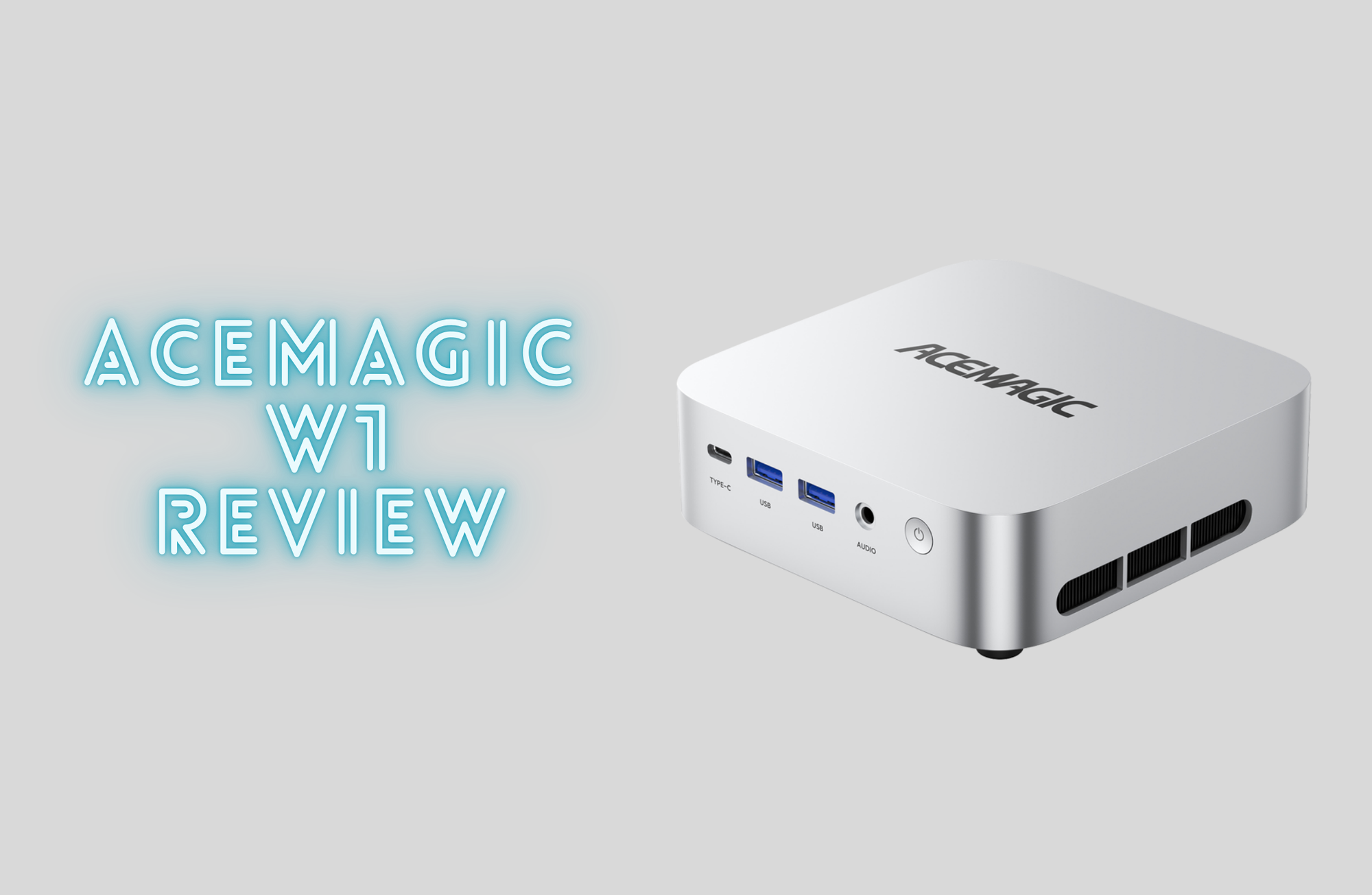
Preface
Mini PCs have come a long way from quirky desk ornaments to serious workhorses—can the AceMagic W1 prove it’s a cut above? My last deep dive into this category was with the AceMagic AM08 Pro, a Ryzen 7 7735HS-powered beast with Radeon 680M graphics. That little champ handled everything I threw at it: Visual Studio coding, Hyper-V VMs for Windows compatibility testing, and more. But it wasn’t perfect—lacking NVMe expansion and modern ports like Thunderbolt or USB4 left me wanting.
Enter the AceMagic W1. With my recent hardware prototyping projects demanding new generation of IO for modernizing server hardware, its USB4 promise caught my eye. AceMagic offered me a unit to test, and I couldn’t resist. In this review, I’ll polish this "rough diamond" by exploring its design, specs, and performance—warts and all.
Look and Feel
The W1 looks like a stretched AceMagic Vista V1, beefed up to house its gutsier internals. Its silver finish and black base keep things understated—sleek, though it’s a fingerprint magnet. At 128mm long, 128mm wide, and 40mm thick, it’s more compact than an M1 Mac Mini but chunkier than the ultra-slim Vista V1. Think of it as the Goldilocks of mini PCs—not too big, not too small.
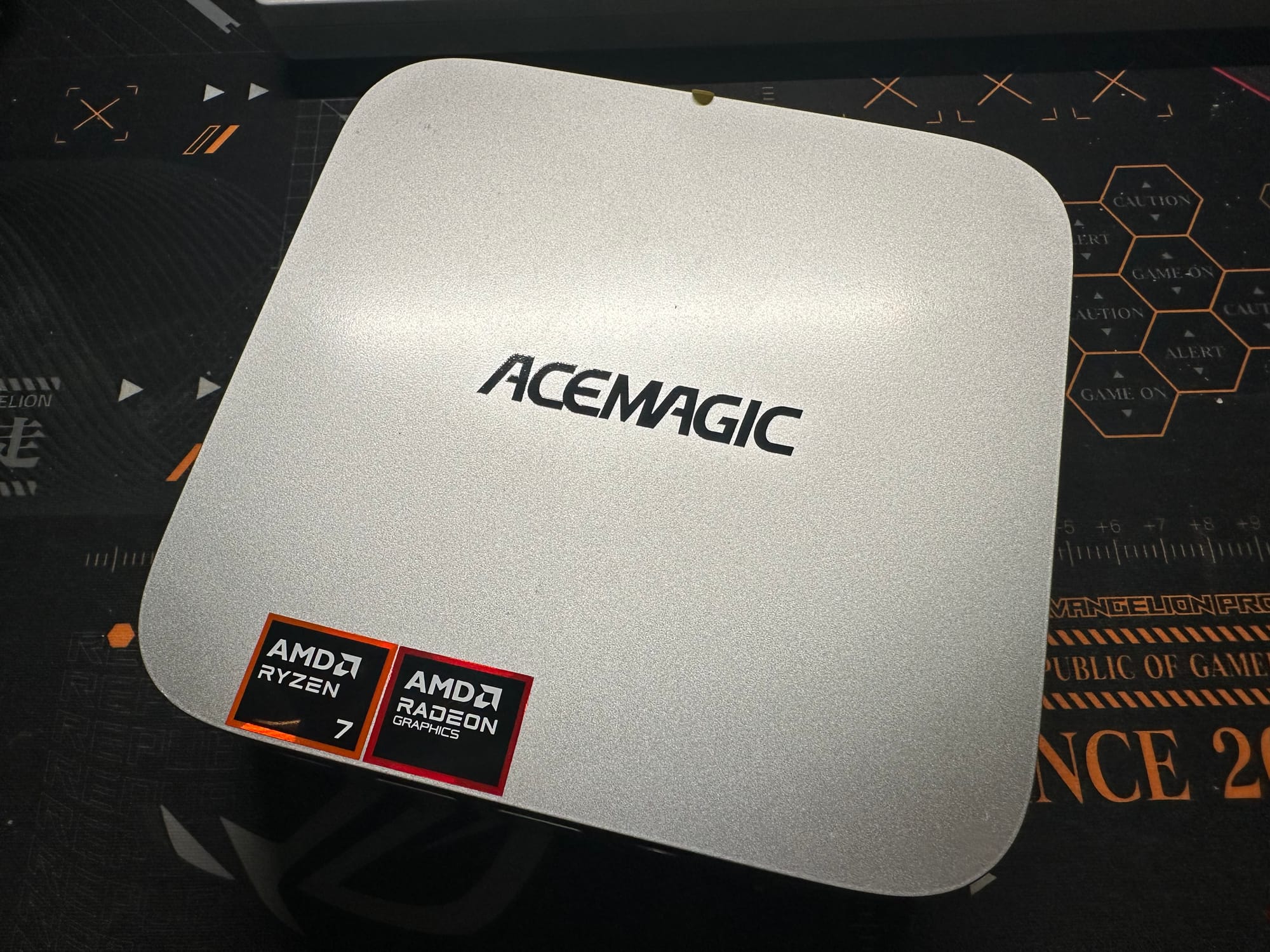
The front panel is a connectivity win: a 3.5mm audio jack, a 40Gbps USB4-capable USB-C port (hello, prototyping lifeline!), and two 10Gbps USB 3.2 Gen 2 USB-A ports. A close-up shows the layout’s practicality for quick plug-ins.
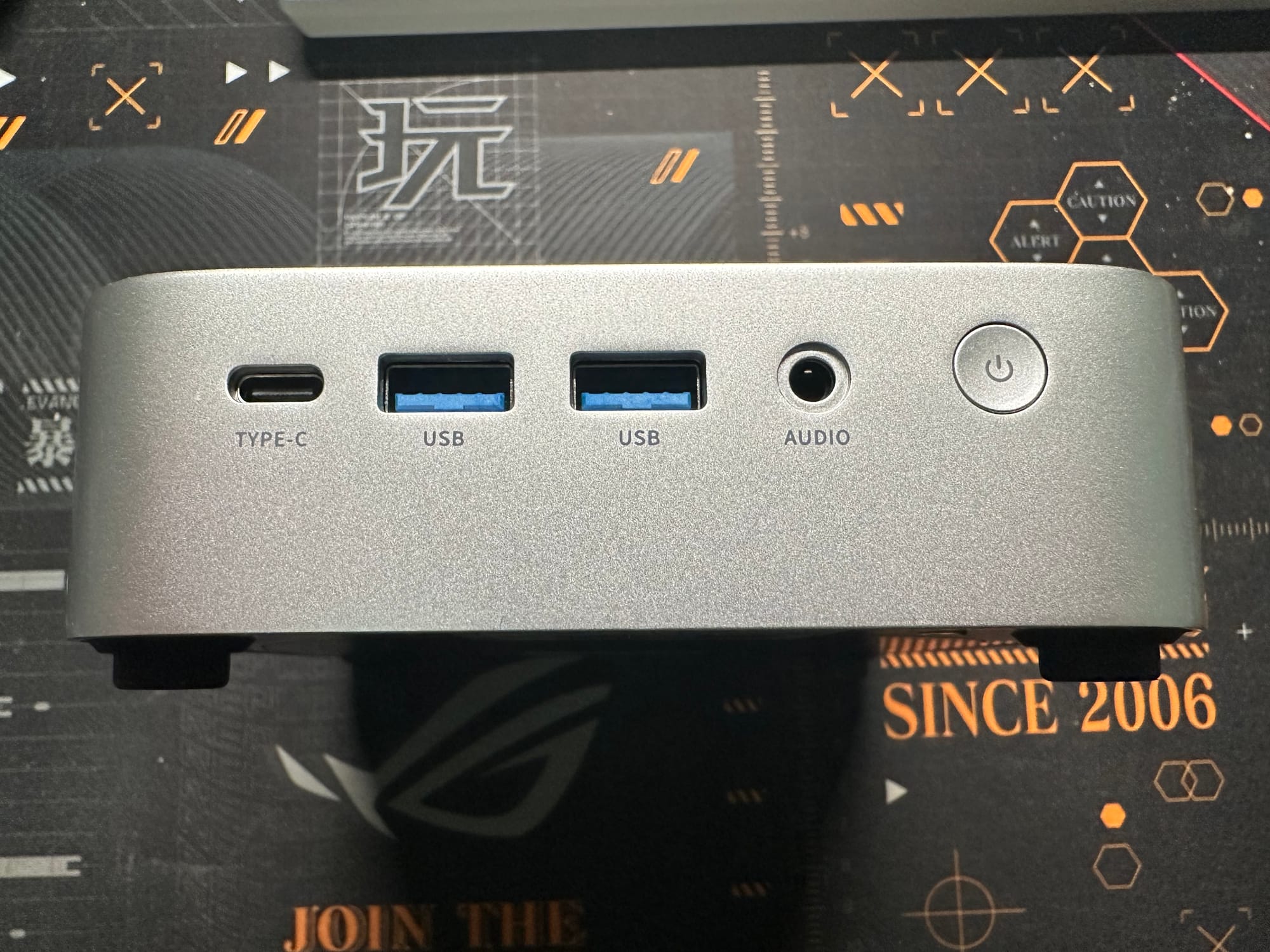
The rear expands your options with four 5Gbps USB-A ports, HDMI 1.4, DisplayPort 1.4, and a 2.5GbE LAN port—solid, though the HDMI version feels dated for 2025.
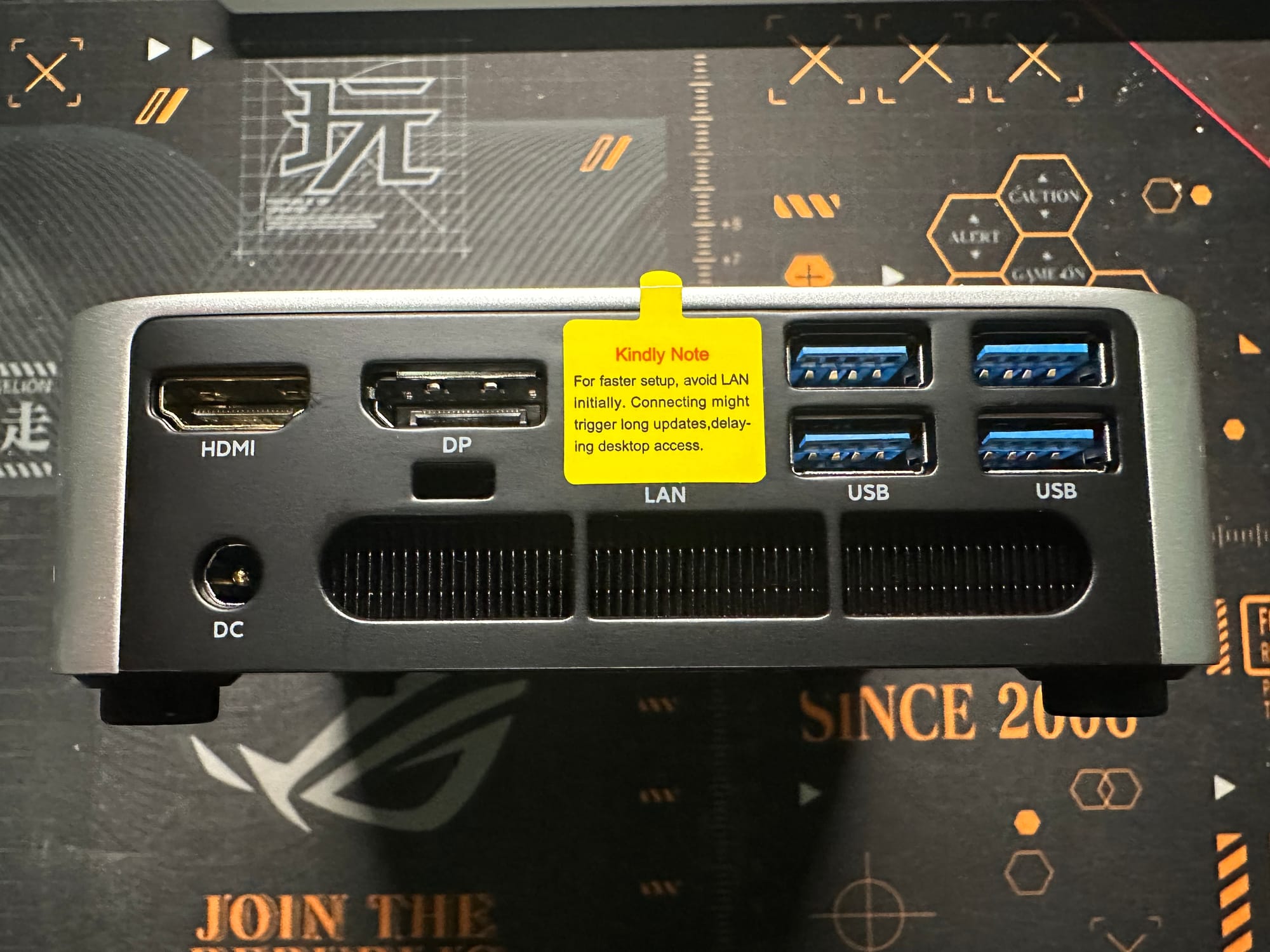
Large perforations on the sides and bottom hint at serious cooling potential. Does it deliver? We’ll find out in performance testing.
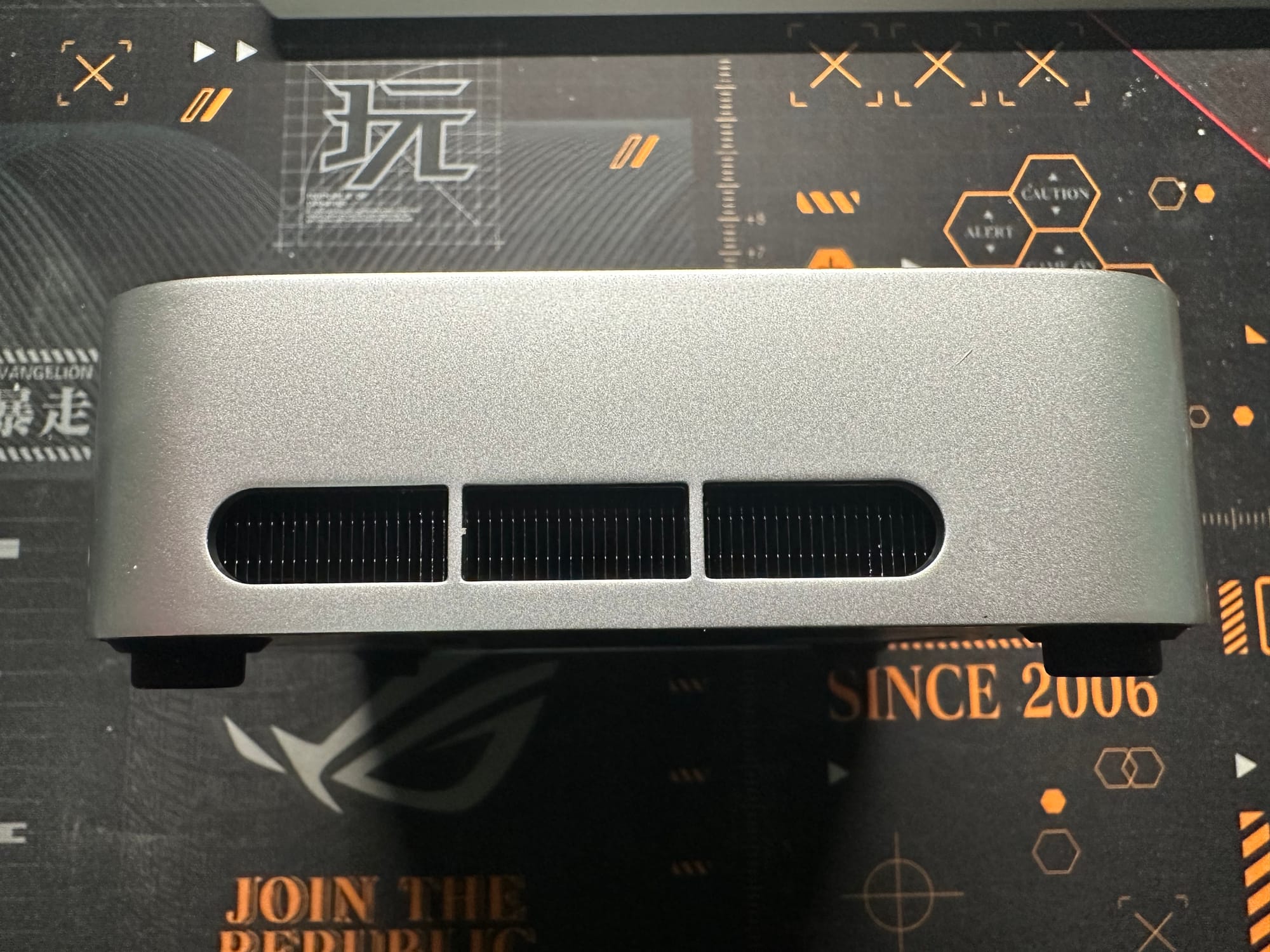

Hardware Overview
The AceMagic "Warlord" W1 packs an AMD Ryzen 7 8745HS—a Zen 4 chip with 8 cores, 16 threads, and boost clocks up to 4.9GHz (single-core) and 4.4GHz (all-core). Its Radeon 780M GPU, with 20 RDNA 3.5 Compute Units and a 2.6GHz boost, promises cutting-edge integrated graphics. Compared to its sibling, the Ryzen 7 8845HS, it skips the NPU (AI acceleration hardware) and has slightly lower clocks. For most users, the NPU omission won’t sting even if you are using local LLMs - coding and gaming? You’re covered.
To keep this CPU cool does require more efforts to strike an acceptable balance between thermal headroom and noise level. AceMagic opted to use a radial fan to blow air through two stacks of copper heatsink fins. The fan draws in air from the bottom of the case, and expels it through the perforations on the side and the back.
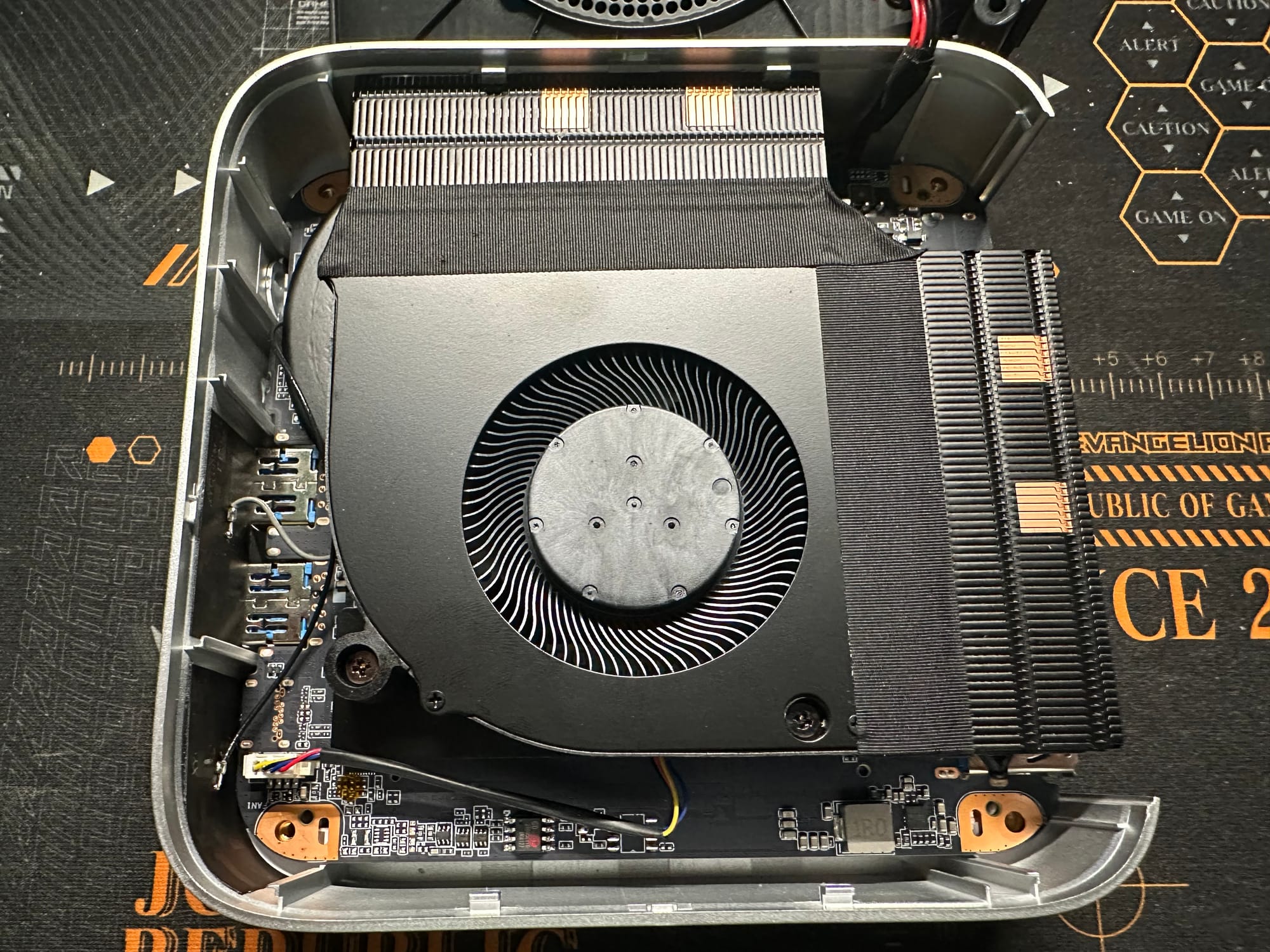
Memory is a highlight: 32GB of 5600MT/s SODIMM RAM (upgradeable, not soldered) outpaces many sub-$800 mini PCs. Storage is a snappy but no-name 1TB PCIe 4.0 NVMe SSD. Networking includes a Realtek 8125B for 2.5GbE LAN and a Realtek 8852BE for Wi-Fi 6 and Bluetooth 5.2.
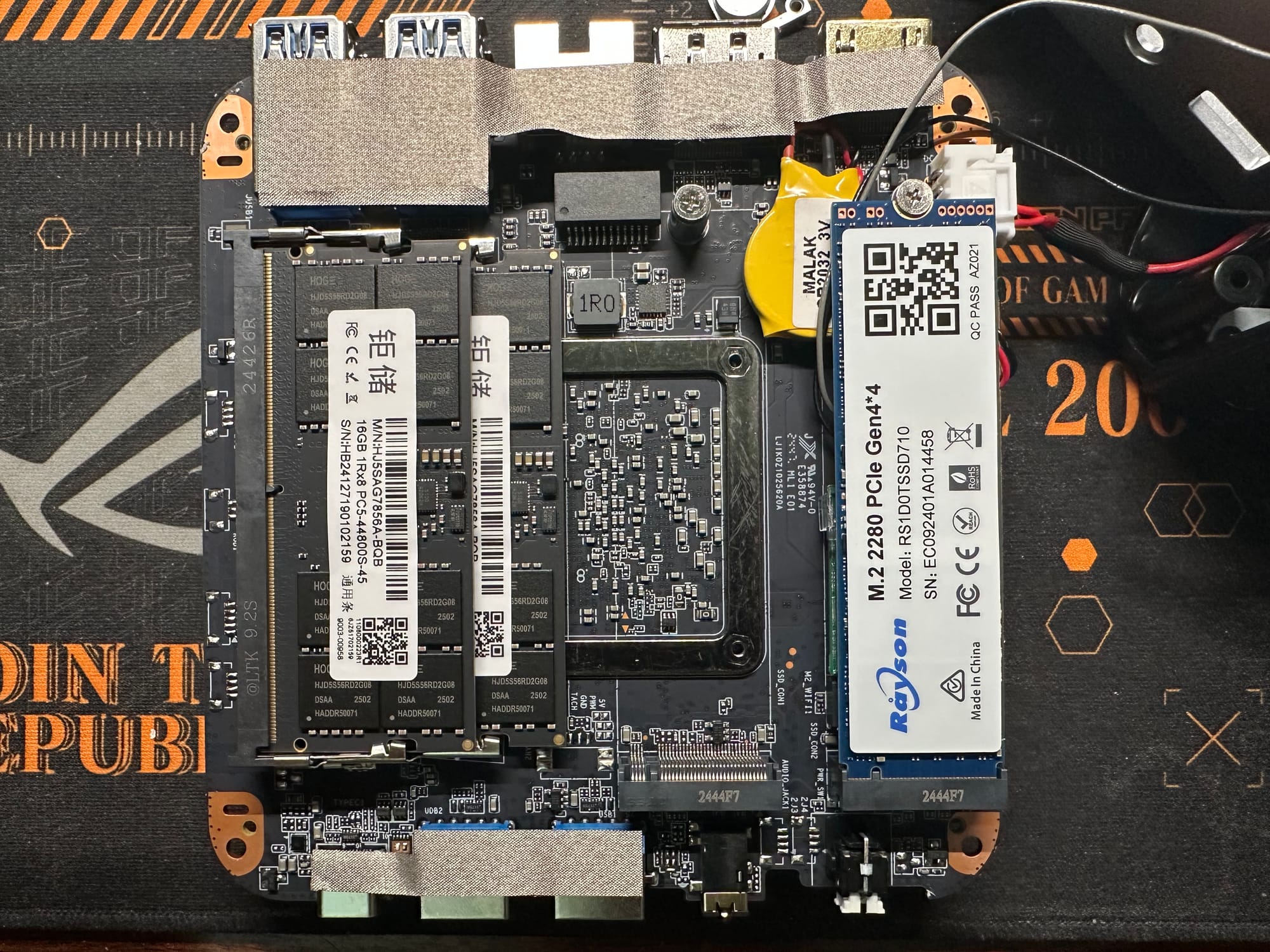
A 120W (19V, 6.32A) power brick keeps it humming.
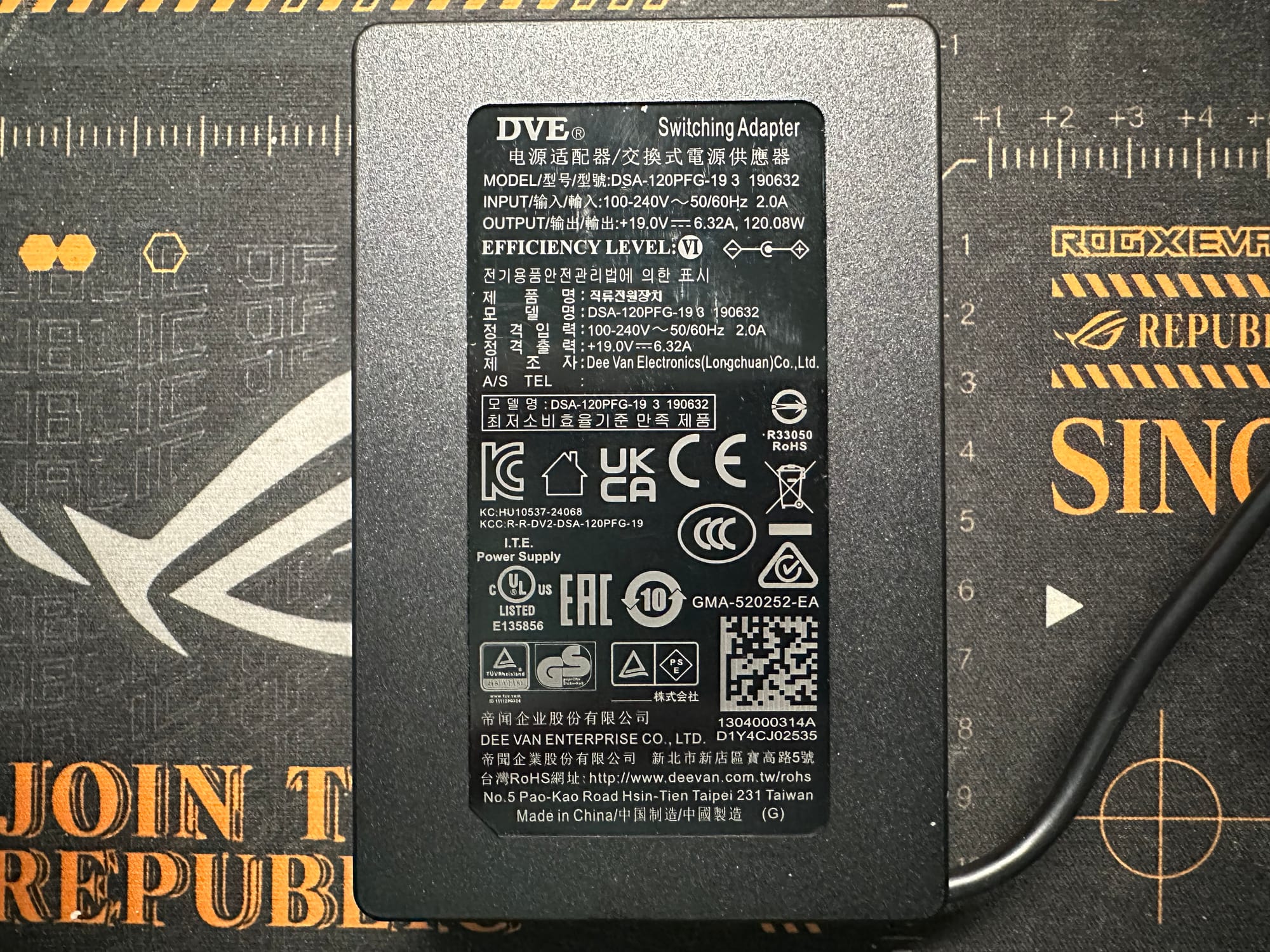

Key Specifications:
CPU: AMD Ryzen 7 8745HS (8 cores, 16 threads, up to 4.9GHz)
GPU: AMD Radeon 780M (20 RDNA 3.5 CUs, up to 2.6GHz)
RAM: 32GB 5600MT/s SODIMM
Storage: 1TB PCIe 4.0 NVMe SSD
Networking: 2.5GbE LAN (Realtek 8125B), Wi-Fi 6 (Realtek 8852BE), Bluetooth 5.2
Ports: 1x USB4 (40Gbps), 2x USB 3.2 Gen 2, 4x USB-A, HDMI 1.4, DisplayPort 1.4, 3.5mm combo jack
Power: 120W (19V, 6.32A)
Performance Benchmarks
I put the W1 through its paces with a gauntlet of benchmarks, testing CPU, GPU, storage, and network performance. Here’s how it stacks up—and what it means for real-world use.
Hardware Validation
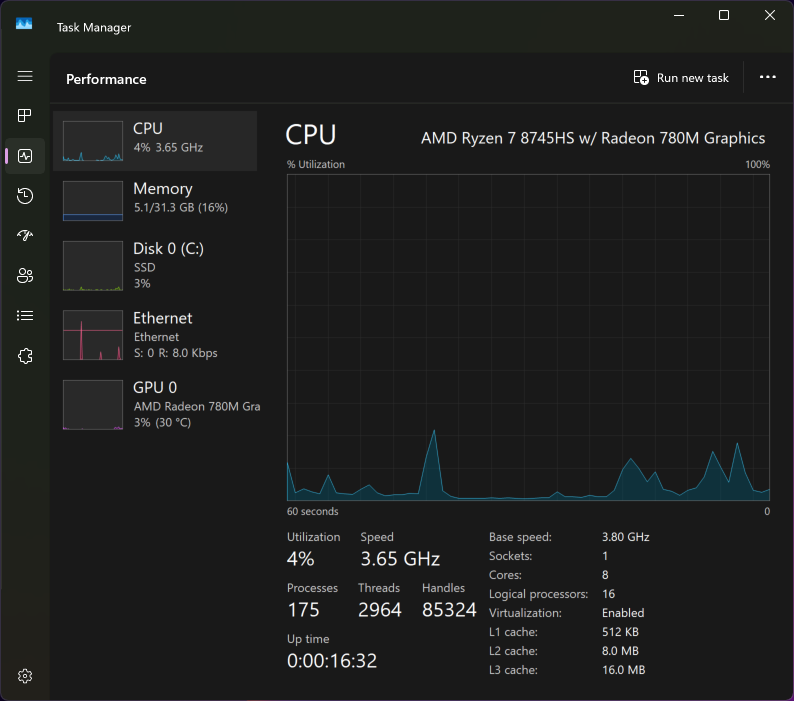
CPU Performance:
Cinebench 2024:
Single-Core: 104
Multi-Core: 943
As we can see from the chart, this score already outshines the Zen3-based Ryzen 7 5800X, which was considered as one of the top CPUs just a few years ago, and it is still very capable till this day.
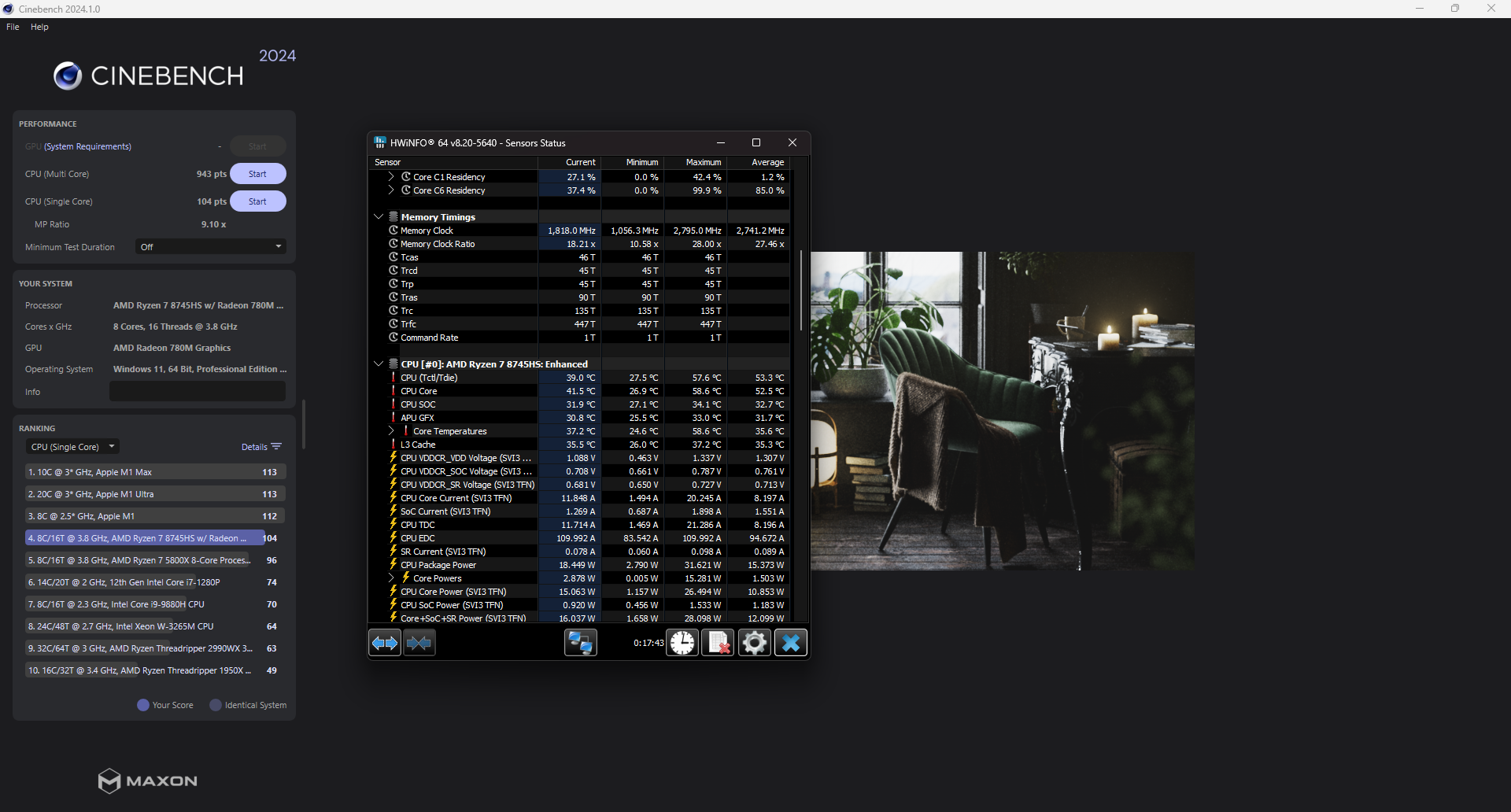
Geekbench 6:
Single-Core: 2591
Multi-Core: 12943
For GB6, the AceMagic W1 scored very well thanks to the Zen4-based Ryzen 7 8745HS APU.
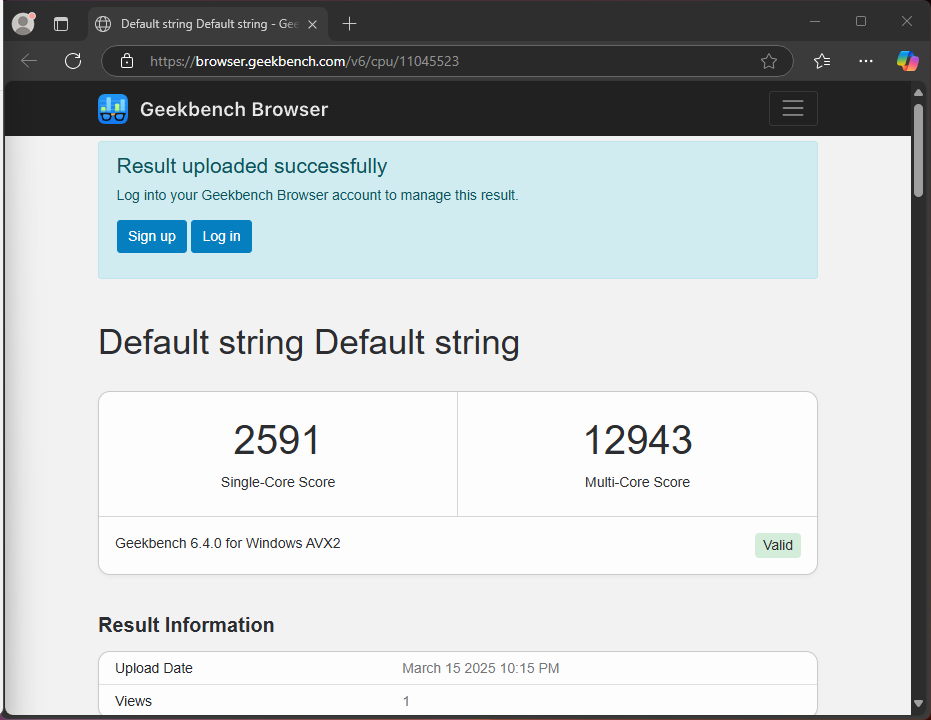
GPU Performance:
Geekbench 6:
OpenCL: 29155
Vulkan: 35904
GFXBench:
Aztec Ruins, 1080p High: 150 FPS
Unigine Benchmarks:
Heaven (Basic): 130 FPS
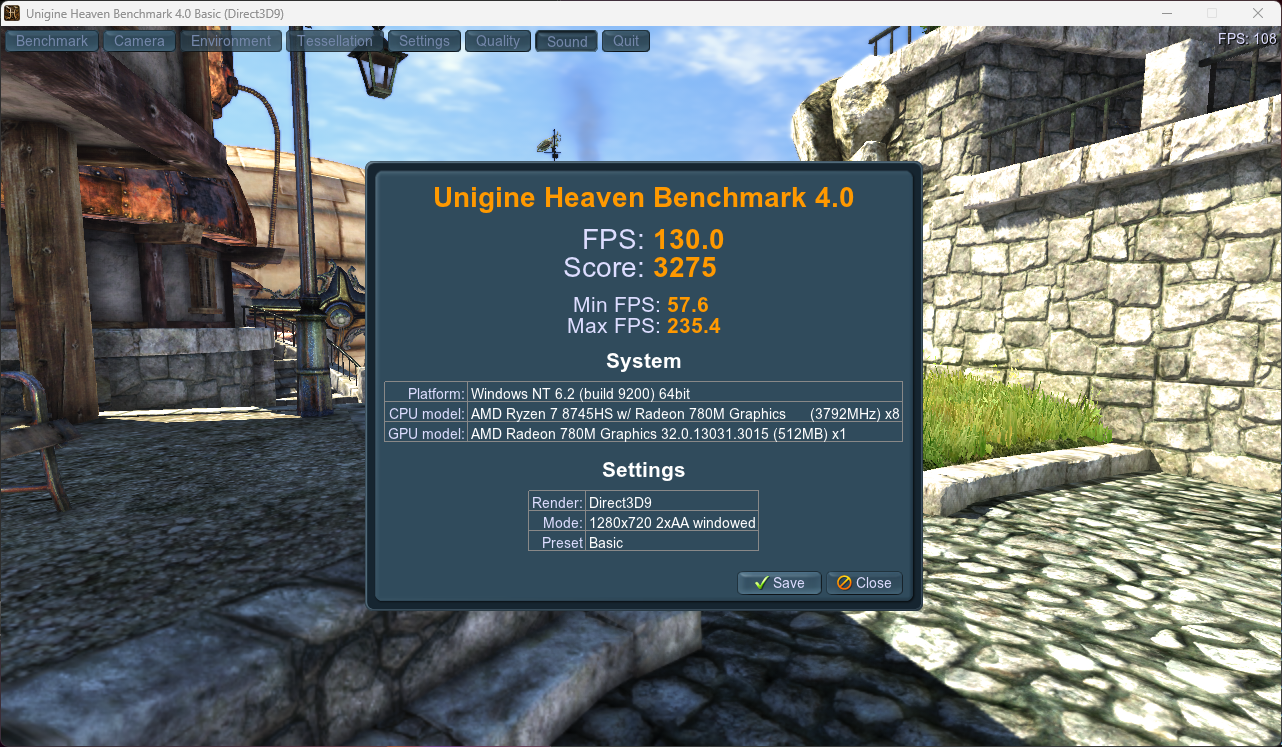
Heaven (Extreme): 36.3 FPS
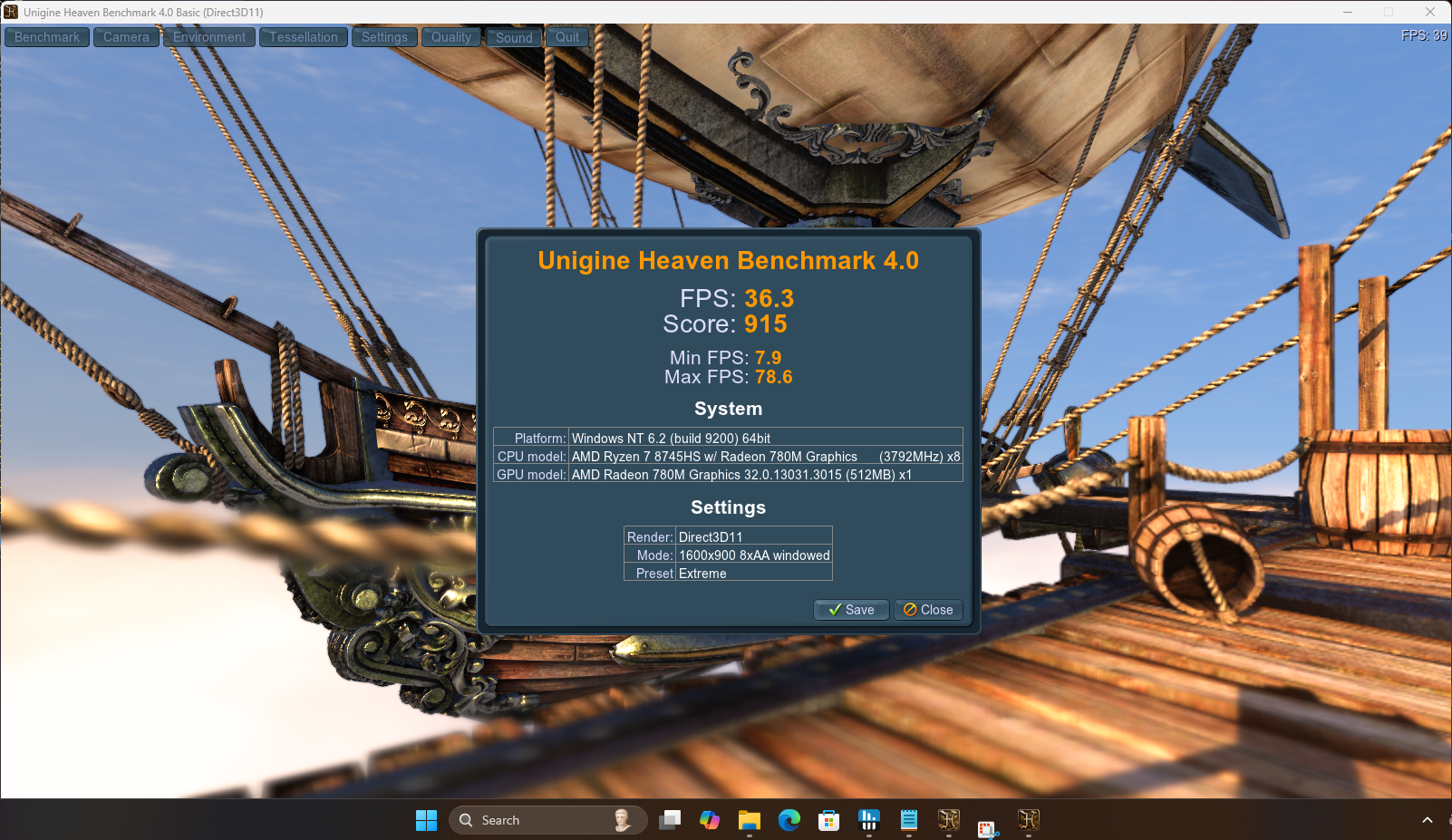
Valley (Extreme): 33.7 FPS
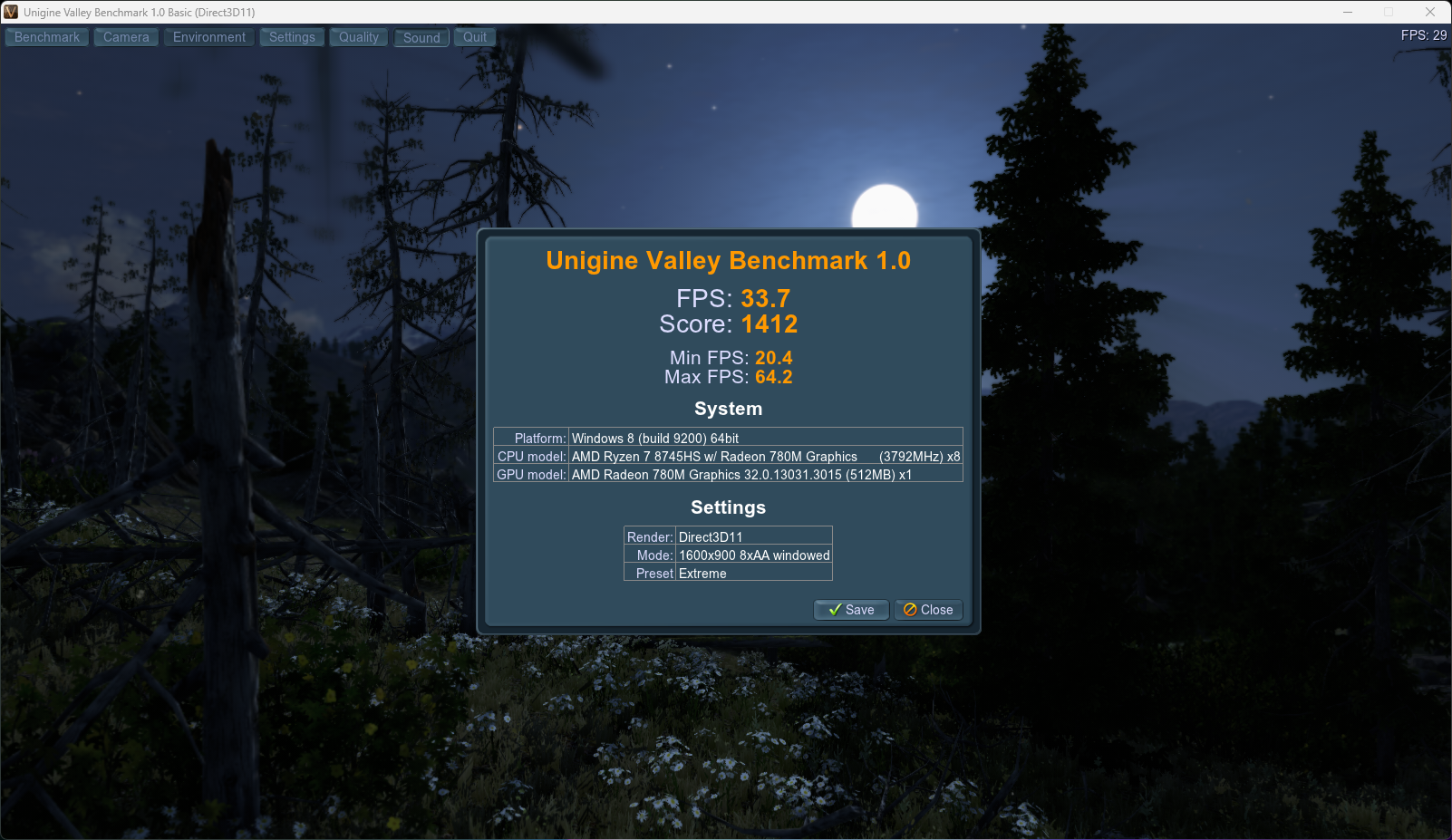
Superposition (1080p Medium): 5029
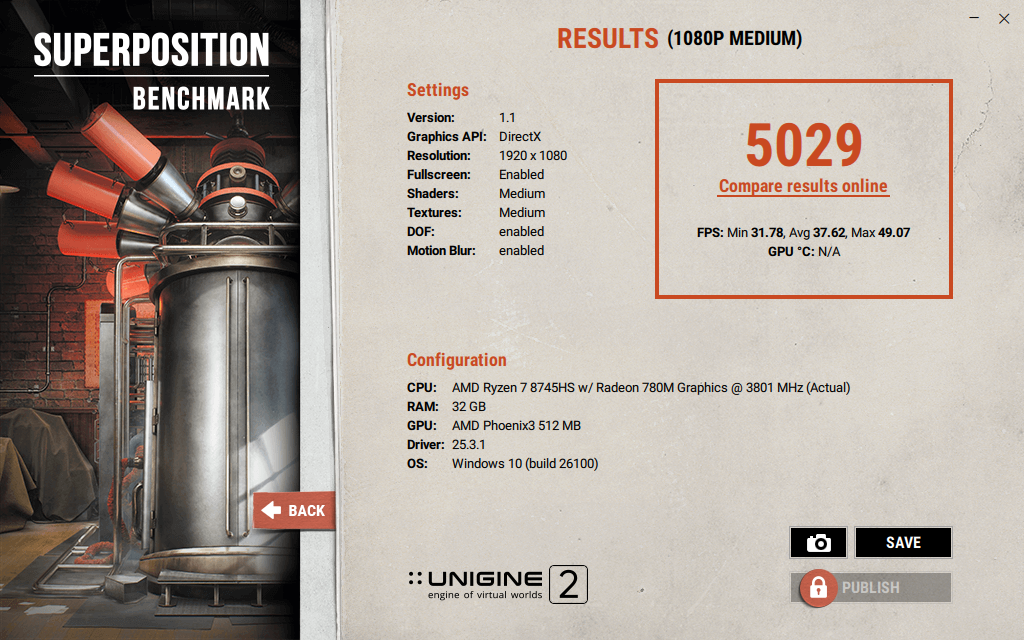
FurMark:
720p, 2X MSAA: 27 FPS
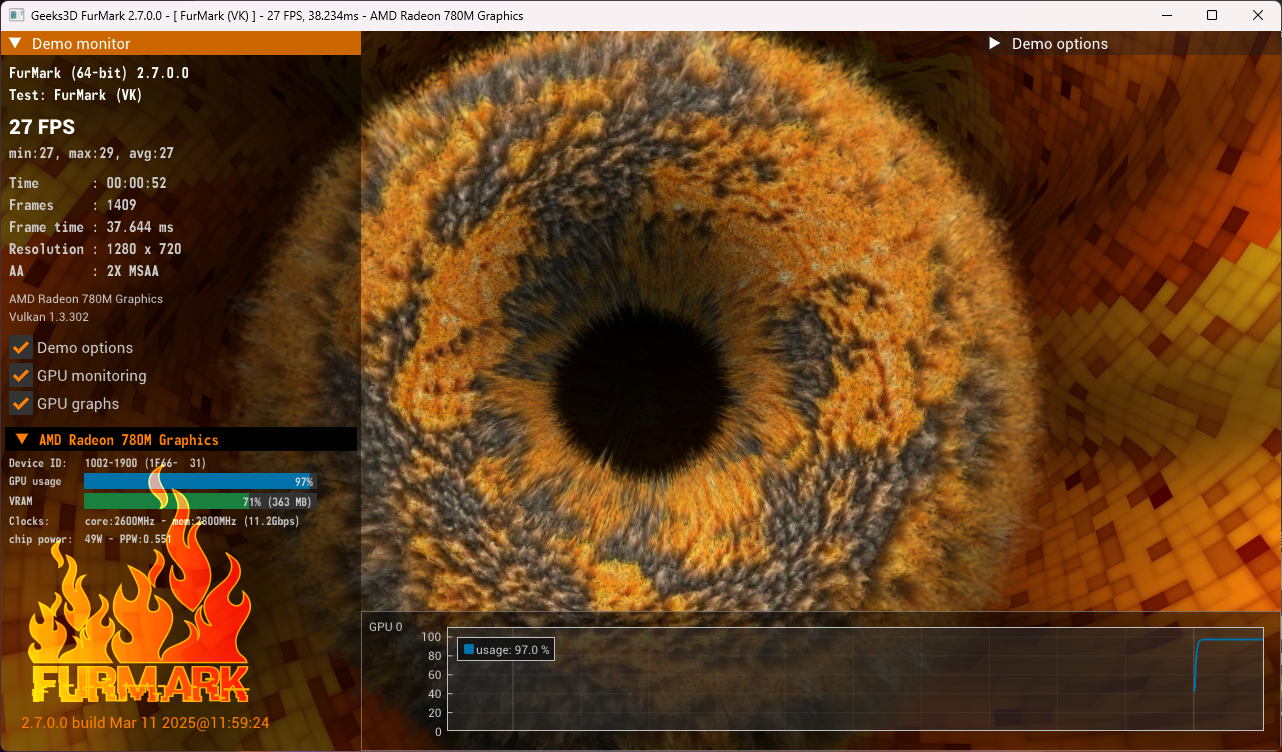
RAM Performance:
AIDA 64 Cache & Memory Benchmark:
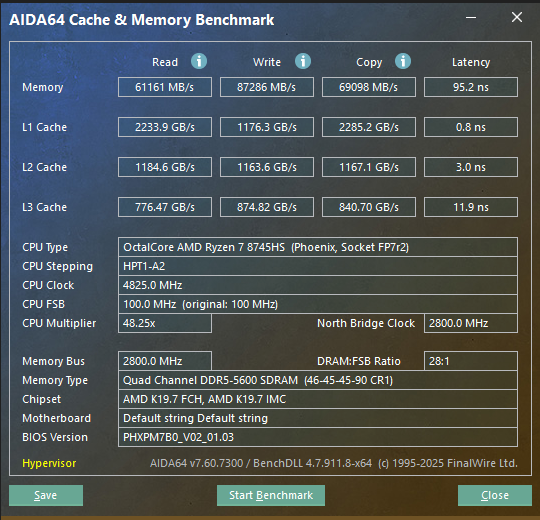
This is an acceptable result for a DDR5 system - 60 GB/s read, 87 GB/s write is no slouch, but it is still very slow compared to GDDR for the graphics. Also, latencies at the high 90s is abysmal. Don’t get me wrong, it is a huge step up from DDR4, but DDR5-6000 or even higher should be considered for systems of this caliber.
Storage Performance:
CrystalDiskMark (Real World Preset):
Sequential Read: 2457 MB/s
Sequential Write: 3912 MB/s
Random Read: 13,476 IOPS
Random Write: 39,463 IOPS
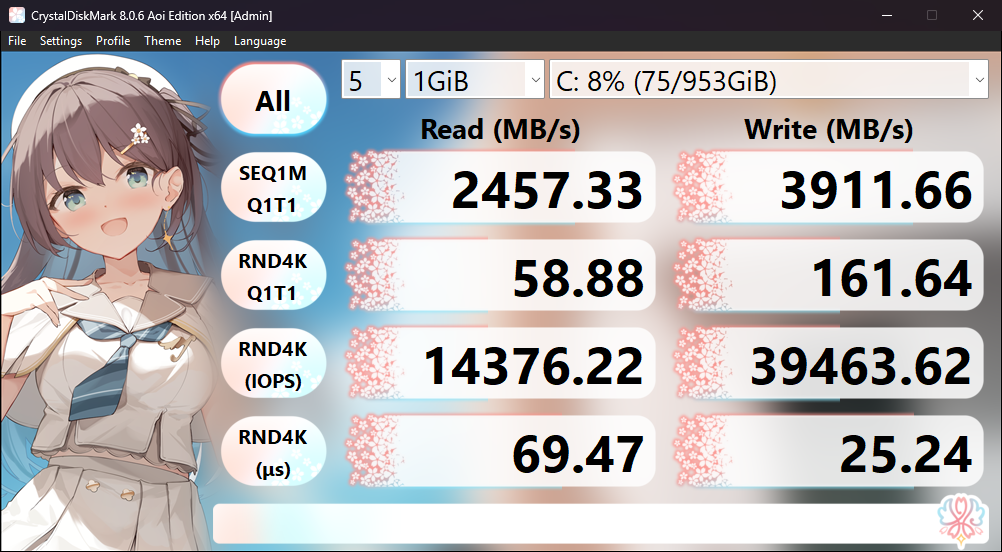
While I do not base my scoring system on the “Peak Performance” preset, I’ve included a screenshot for it. Note: No SSD will reach this performance in daily operations.
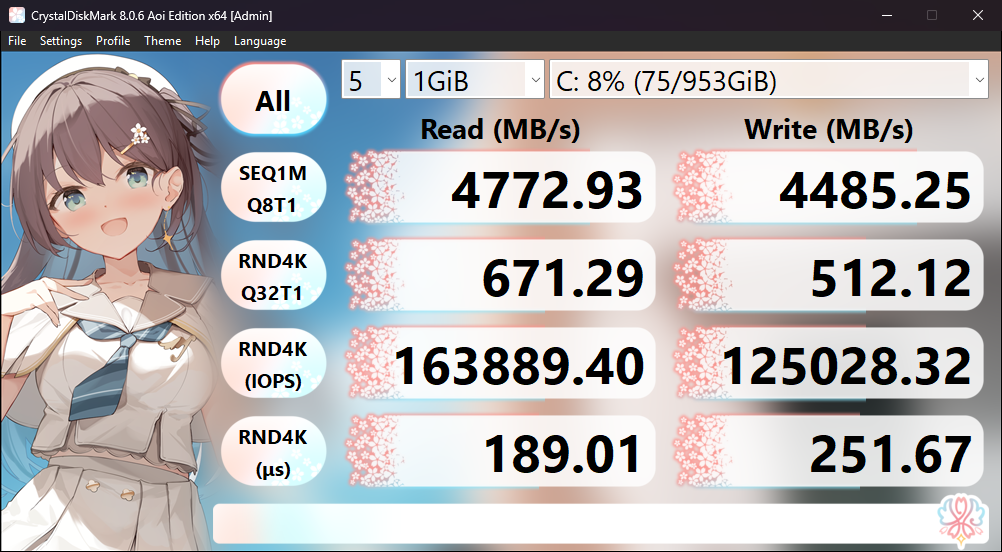
The no-name SSD performed better than I thought. It performed better than many DRAM-less entry level PCIe 4.0 drives, but won’t be able to compete with main stream drives that come with DRAM cache onboard.
Network Performance:
iperf3 Throughput: 2370 Mbps
The number shown is the practical limit of a 2.5GbE connection with normal MTU size of 1500.
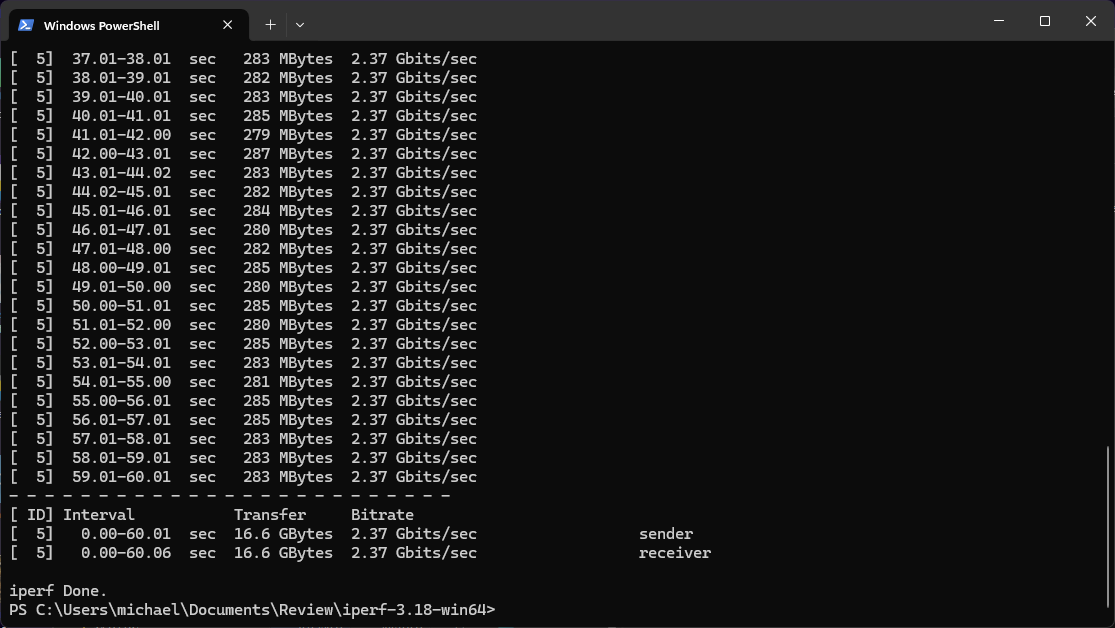
USB4
I’ve connected USB4 NVMe enclosures and Thunderbolt 3 PCIe docks, they both worked flawlessly. The following screenshot is connecting a PCIe 3.0 Intel X710 10GbE NIC and an IOCREST PCIe 4.0 10GbE NIC via Thunderbolt 3 dock.

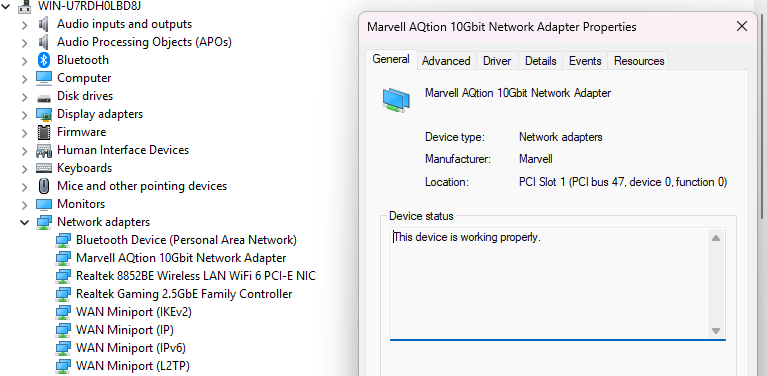
Power and Efficiency
Idle Power: 11W (sips power compared to bulkier desktops)
Load Power: 84W (on par with Ryzen 7 mini PCs, though the vents kept it cool and quiet)
The 120W brick is compact but limits ultra-portable setups. Thermals impressed me—the perforation-heavy design paid off with no throttling during hour-long stress tests.
Final Thoughts
The AceMagic W1 demonstrates commendable performance within its compact form factor. The Ryzen 7 8745HS and Radeon 780M combination provides substantial processing and graphical power—benchmarks confirm its capability for demanding workloads like multi-threaded development (Cinebench Multi-Core: 879) and lightweight gaming (GFXBench: 150 FPS at 1080p). This power is delivered efficiently, with a peak load consumption of 84W and sustained operation at 82°C under stress, facilitated by a perforated thermal design. Noise levels, measured at approximately 38–44 dB under load, are reasonable but not class-leading; the system is audible yet avoids excessive fan whine, striking a balance between cooling and acoustics rather than achieving near-silent operation.
Connectivity is a standout feature. The 40Gbps USB4 port enables high-speed data transfers and potential eGPU support, while the 2.5GbE LAN port achieves near-maximum throughput (2370 Mbps). Internally, a PCIe 4.0 NVMe expansion slot offers storage scalability—a rarity in this segment. However, the W1 compromises on breadth: it provides only one USB4 port where competitors like the Minisforum UM890 Pro offer dual 40Gbps ports, and its single 2.5GbE LAN contrasts with dual-LAN options on systems like the Beelink SER8. Thermally, while effective, the cooling system lacks the robustness of higher-end designs (e.g., vapor chamber solutions in Intel NUC 13 Pro), limiting its capacity for silent operation during prolonged heavy loads.
Ultimately, the W1 is a work in optimization—a "rough diamond" engineered for strong, cost-effective performance rather than category dominance. It excels as a versatile, budget-conscious mini PC for developers and power users prioritizing USB4 and expandability, but those seeking top-tier connectivity or whisper-quiet thermals may find alternatives more compelling.
At the end of the day, this system would be what I consider as an excellent all-rounder. It has the processing power to satisfy most demanding workloads, without breaking the bank. However, it lacks spotlight features - while offering “some” degrees of functionality in each category, it won’t stand out from the crowd. If your use case doesn’t require more than one USB4 and one NIC, this machine would be a great fit.